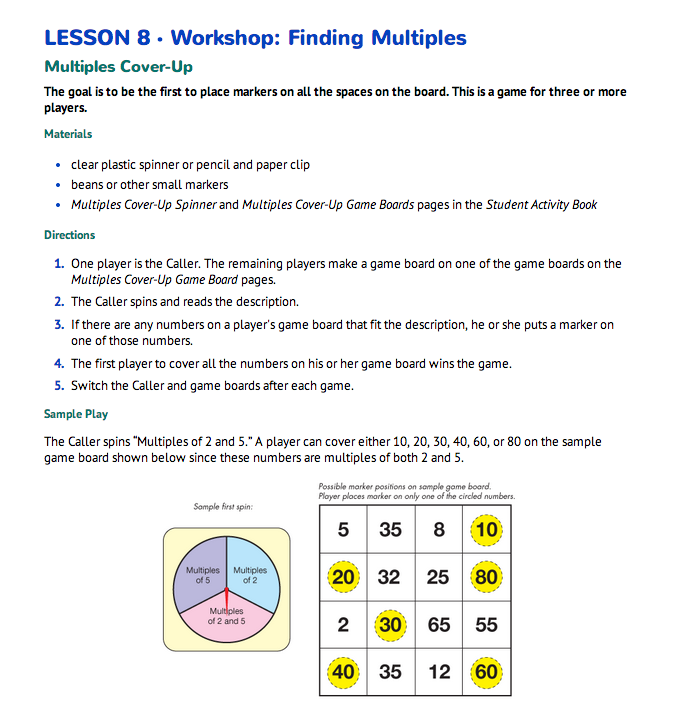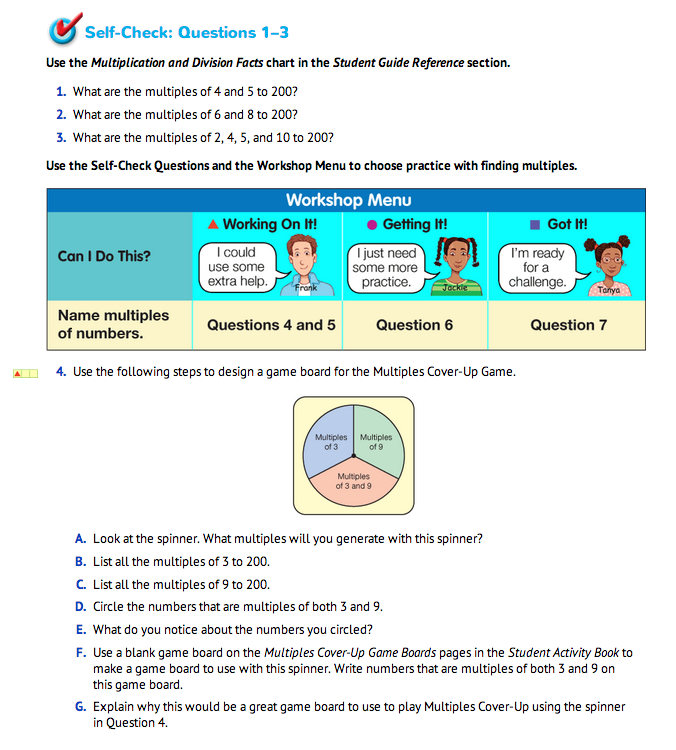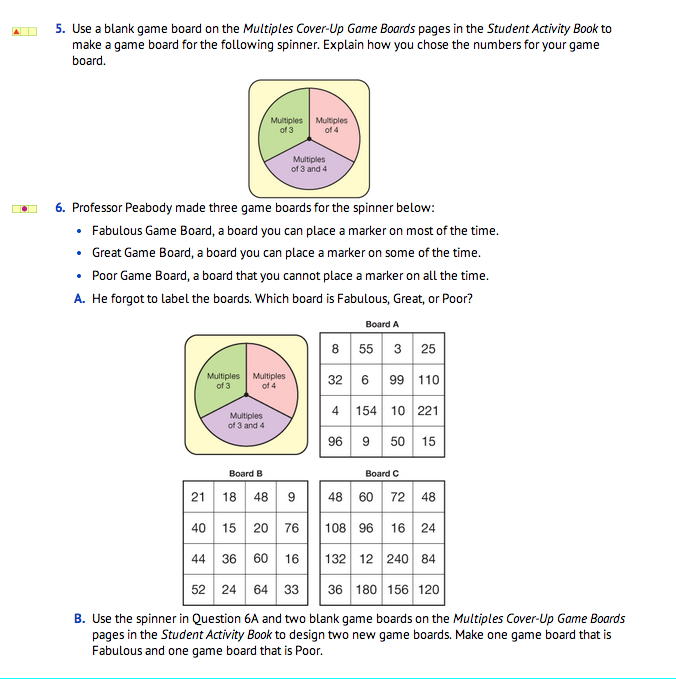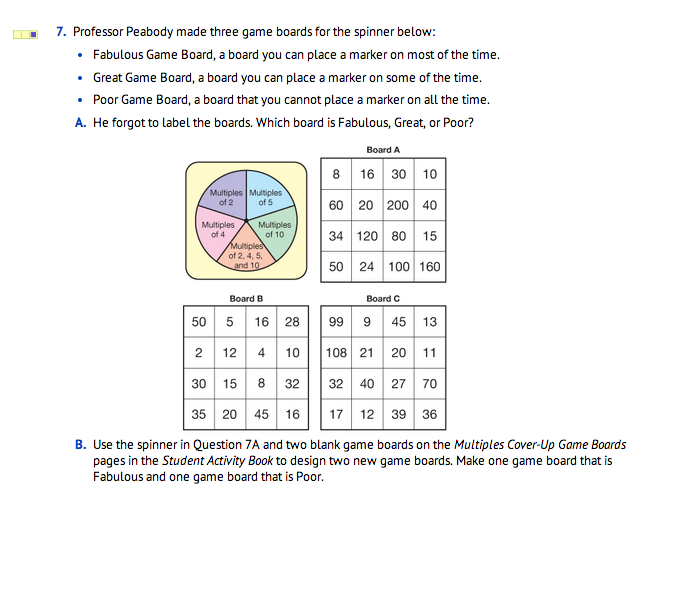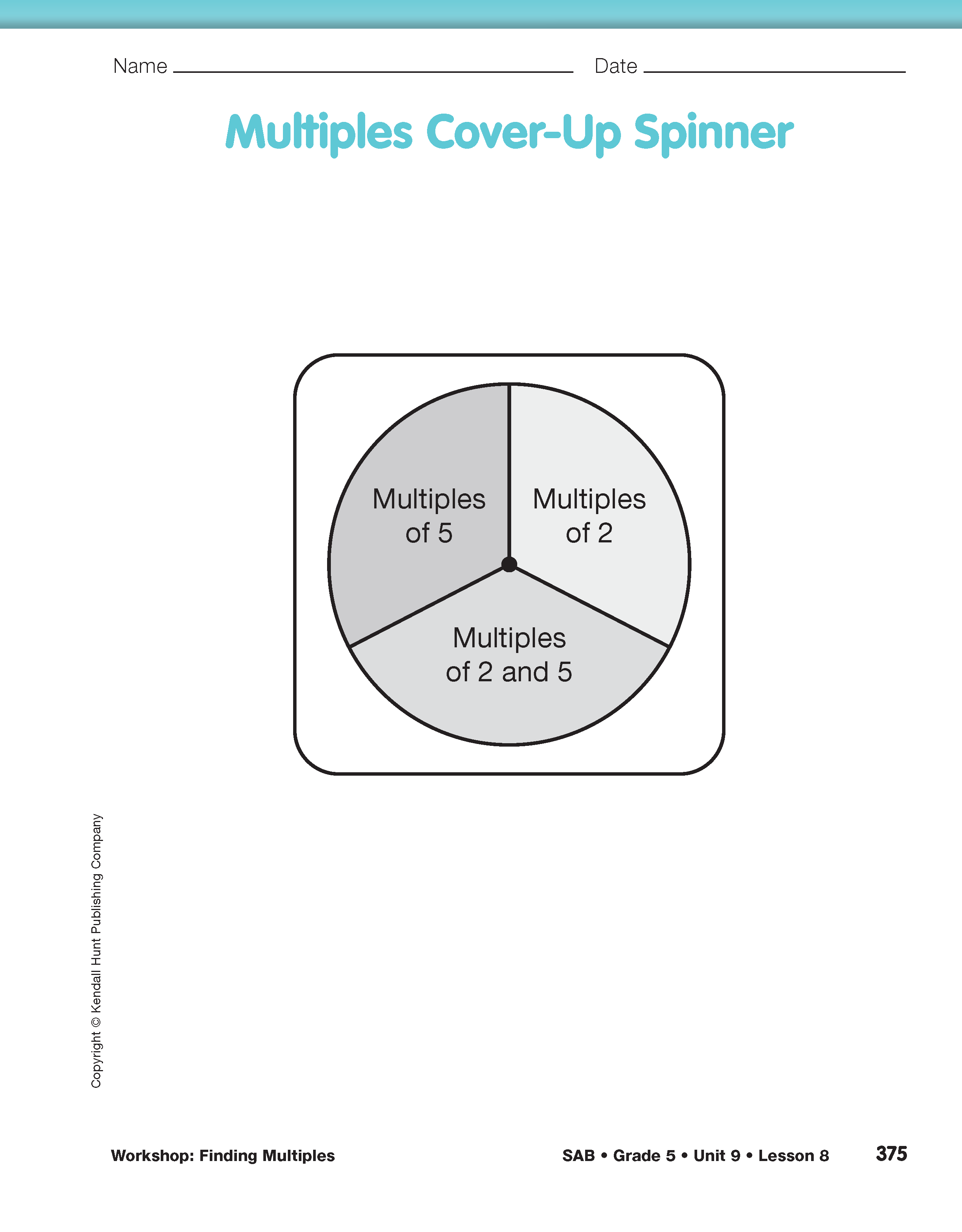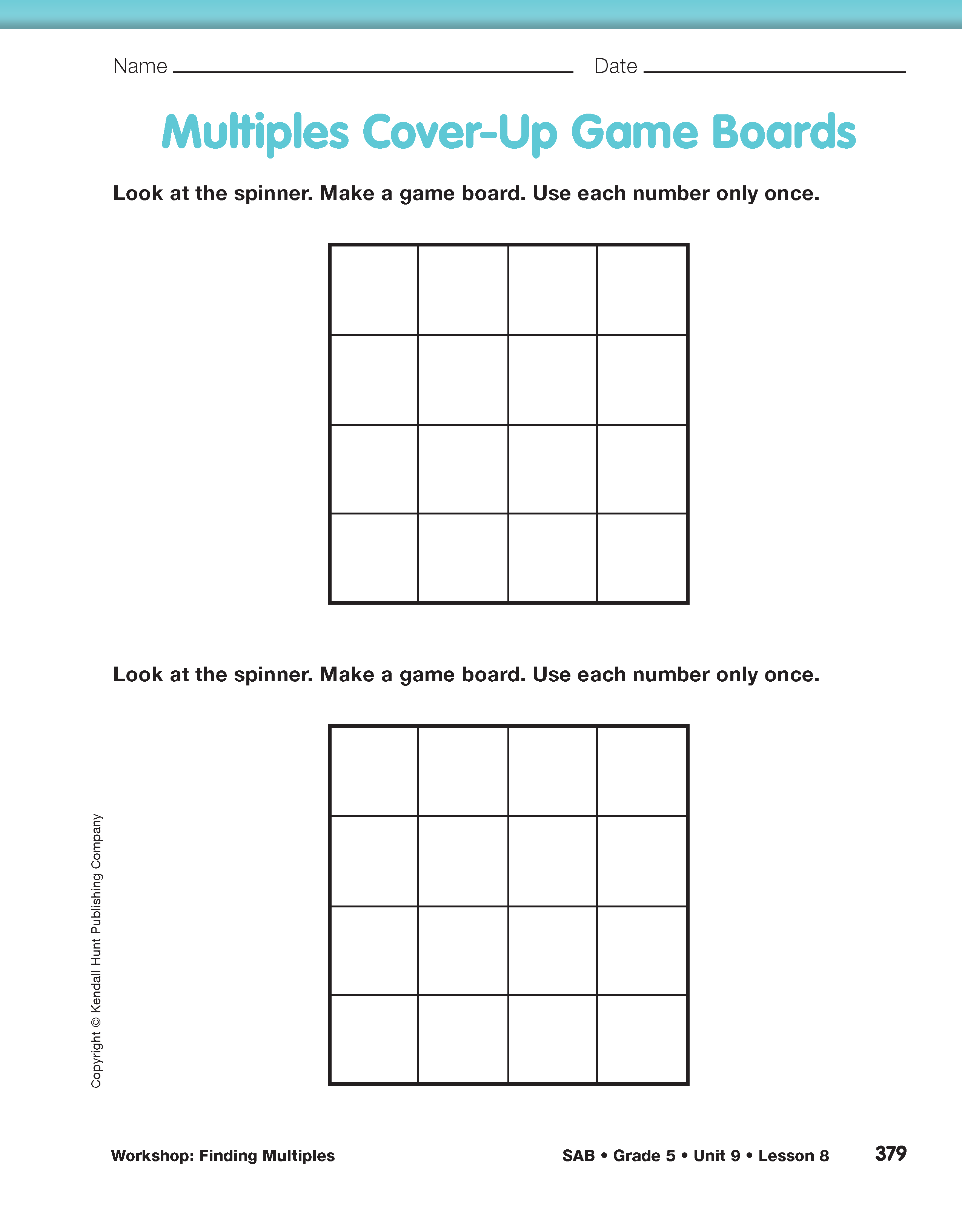Workshop: Finding Multiples
Est. Class Sessions: 1–2Developing the Lesson
Play Multiples Cover-Up. To begin this lesson, introduce the Multiples Cover-Up game. Directions for this game are found on the Workshop: Finding Multiples pages in the Student Guide. Display the spinner from the first page of the Multiples Cover-Up Spinner pages in the Student Activity Book. Ask students to use the the information on the spinner to choose numbers for a game board.
Ask:
Direct students to the first blank game board on the Multiples Cover-Up Game Boards pages in the Student Activity Book. Tell students to use the first blank game board to create a board that can be used with the spinner on the display. After each student creates a game board, demonstrate how to play using the Multiples Cover-Up game directions. The game can be played as a whole class with one student or the teacher designated as the Caller, or students can be arranged in small groups with one student in each group designated as the Caller. After playing one round, direct students to think about the numbers that could be used to build a new game board using this spinner.
Ask:
Use the two blank spinners on the Multiples Cover-Up Spinner pages in the Student Activity Book to make spinners for new games of Multiples Cover-Up. The spinner with three possible outcomes can be used to identify the multiples of two different numbers and the one with four outcomes can be used to identify multiples of three numbers. As students finish their selected problems in the Workshop, they can play additional rounds of Multiples Cover-Up.
Set Up the Workshop. The menu and problems for this Workshop are in the Student Guide on the Workshop: Finding Multiples pages. The spinners and game boards are in the Student Activity Book on the Multiples Cover-Up Spinner pages and the Multiples Cover-Up Game Boards pages.
Choose Targeted Practice. Students begin this workshop by answering Self-Check Questions. These questions serve two purposes. First, they clearly communicate the content of the related targeted practice to students. Second, they help students quickly self-assess their progress with Expectations to help them choose which problems to work on in the Workshop.
After students complete the Self-Check Questions, discuss the questions with the whole class. Ask students to share their solutions and explain their reasoning. Facilitate a class discussion with student solutions. Next have students think about the “Can I Do This?” question in the left-hand column of the menu following the Self-Check Questions. Ask students to review their work on the Self-Check Questions to decide which problems to choose from the following groups:
- Students who are “working on it” and need some extra help should circle the problem set marked with a triangle (
 ). These problems provide scaffolded support for developing the essential underlying concepts as well as some opportunities for practice.
). These problems provide scaffolded support for developing the essential underlying concepts as well as some opportunities for practice. - Students who are “getting it” and just need more practice should circle the problem set marked with a circle (
 ). These problems provide opportunities to practice with some concept reinforcement and some opportunities for extension.
). These problems provide opportunities to practice with some concept reinforcement and some opportunities for extension. - Students who have “got it” and are ready for a challenge or extension should circle problems marked with a square (
 ). These problems provide some practice and then move into opportunities for extension.
). These problems provide some practice and then move into opportunities for extension.
Check students' choices to see how well they match your own assessment of their progress on the related Expectations. Help students make selections that will provide the kind of practice they need. Once student select the questions to complete, match groups of students who have chosen similar sets of problems from the menu. Have students work independently or with a partner to solve the problems they chose.














